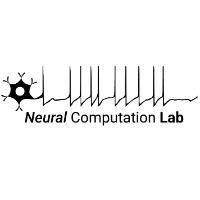Cerebrovascular ischemia is an interruption or decrease in blood supply to the brain that reduces the flow of oxygen and nutrients needed to maintain normal cell function. Neuronal cell death in a particular region changes the receptive fields of the neurons surrounding the damaged tissue. Healthy neurons surrounding the injury experience a disinhibition of their receptive fields and expand into the injury. This expansion is determined by the distance from the healthy neuron to the lesion and the extent of the damage. In this work we developed a computational and analytical model that considers a lesion in a neuronal population and investigated the effects of the lesion on the surrounding receptive fields. It is found that exists an optimal value of plasticity for which the functional recovery is maximum. At the experimental level, investigating the neuronal signals of the imagined visuomotor tasks is very important to detect possible neuronal damage. Hence, experimental EEG data are analyzed by combining an information theory approach that takes into account signal causality, together with a quantification of centrality levels for the different nodes, to discriminate imagined and performed visuomotor tasks considering different rhythmic oscillations. It was found that the imagined cognitive processes coincide with high levels of centrality in the alpha frequency band for the different nodes, and that it is possible to discriminate the performed and imagined task.
P#261
Restoration of plasticity in tissues with neuronal ischemia
Sabrina Natalí Guisande Donadío
- La Plata,
- Argentina
- Natalí Guisande ¹
- , Roman Baravalle ¹
- , Federico Miceli ¹
- , Fernando Montani ¹
- 1 Instituto de Física de La Plata (IFLP), Universidad Nacional de La Plata, CONICET CCT-La Plata (1900) La Plata, Argentina

